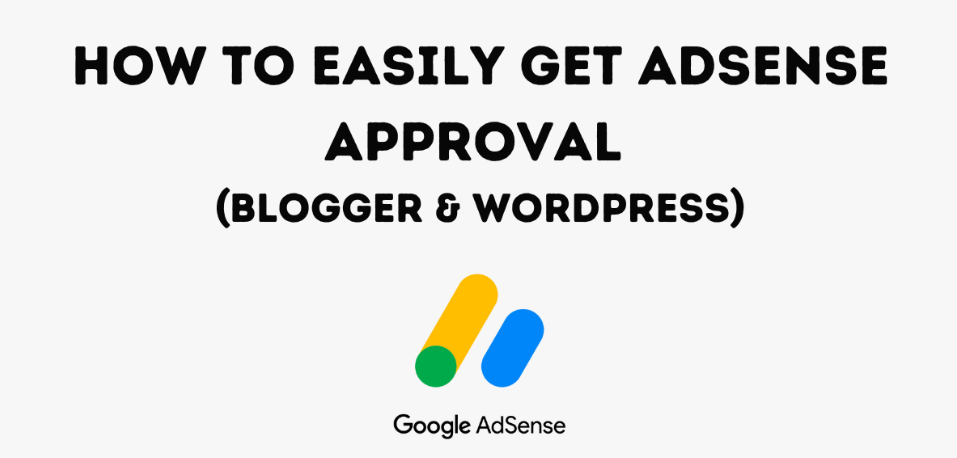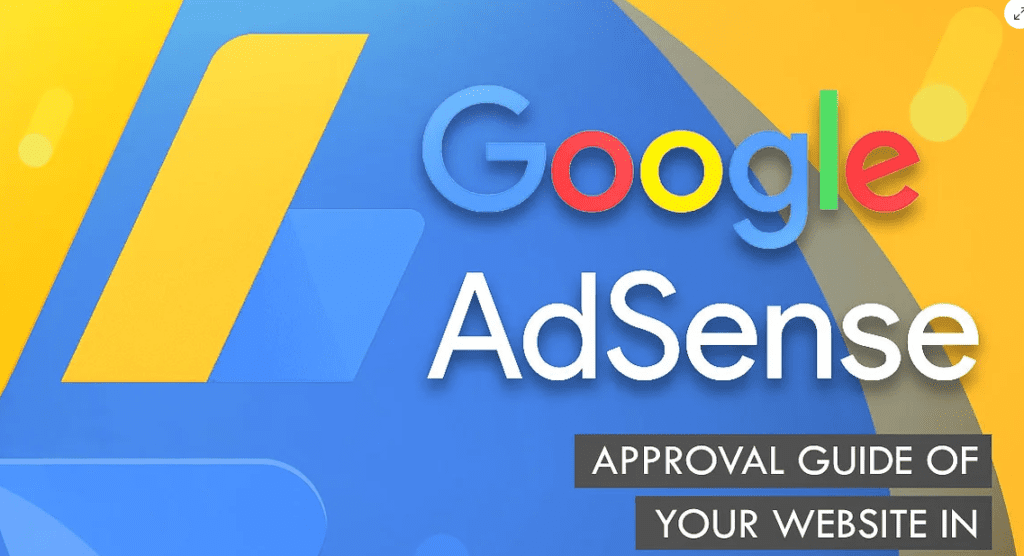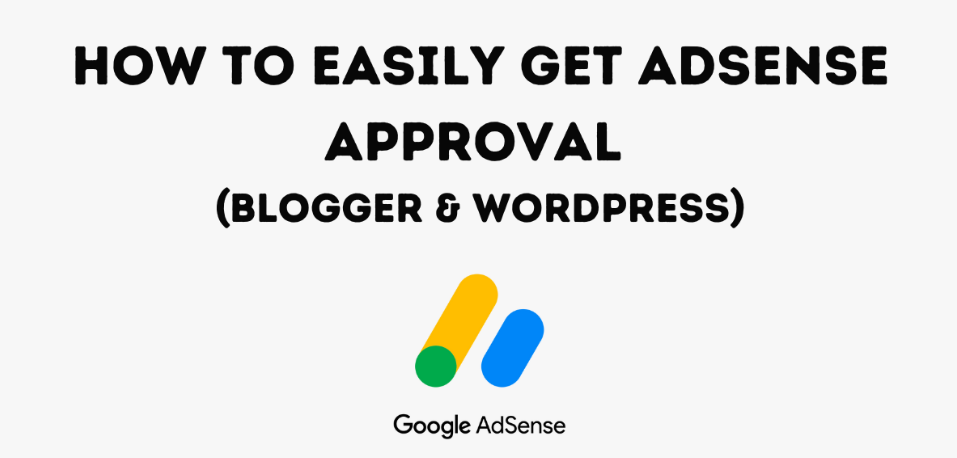Google Adsense is widely recognized as one of the best advertising networks for monetizing websites. It offers a simple and free way to earn income by displaying ads next to your content. As a result, many bloggers prioritize AdSense and recommend it to others. However, getting approved for Adsense is not as easy as it may seem. Even successful bloggers have faced challenges in gaining approval. In this article, we will discuss the steps you can take to increase your chances of getting approved for Google Adsense in 2023.

Table of Contents
- Introduction
- Is Your Blog Ready for Google Adsense?
- Applying for Google Adsense
- Creating a Properly Structured and Quality Blog
- Producing High-Quality Content
- Using Free-Royalty Images
- Avoiding Malpractice Activities
- Choosing a Good Hosting Platform
- Including Contact, About, and Privacy Policy Pages
- Optimizing Your Content for SEO
- What to Do If Your Adsense Application Gets Rejected
- Exploring Alternatives to Google Adsense
- Conclusion
- FAQs (Frequently Asked Questions)
1. Introduction
Google Adsense offers a fantastic opportunity for bloggers to monetize their websites through ad placements. However, due to its popularity, Adsense has stringent guidelines and requirements for approval. By following the strategies outlined in this article, you can increase your chances of getting approved for Google Adsense in 2023.

2. Is Your Blog Ready for Google Adsense?
Before applying for Google Adsense, it is crucial to ensure that your blog meets the necessary requirements. Adsense employs a crawler to scan your blog’s content and determine its eligibility for the program. To improve your chances of approval, make sure your blog is well-crafted and optimized for search engines. Here are some key points to consider:
- Your blog should have a clean and professional design.
- Optimize your blog’s loading speed by using lightweight and clean themes.
- Include essential elements such as a header, sidebar, footer, and content area.
- Ensure your blog is fast and well-optimized to provide a good user experience.

3. Applying for Google Adsense
To apply for Google Adsense, follow these steps:
- Visit the Google Adsense sign-up page.
- Enter your website URL and email address (use the same email address associated with your blog).
- Fill in the required details such as country, phone number, and address.
- Submit your information and wait for an AD code, which will be provided immediately.
- Copy and paste the ad code into your website’s headers.
- Check the box confirming that you have pasted the code.
- You will receive an email from Adsense confirming whether you have been approved or denied.
If you receive an approval email, congratulations! However, if your application is rejected, don’t be disheartened. Rejection is common on the first attempt. Follow the strategies outlined in this article and consider reapplying in the future.

4. Creating a Properly Structured and Quality Blog
To increase your chances of Adsense approval, it is essential to have a well-structured and quality blog. Consider the following tips:
- Choose a lightweight and clean theme for your blog.
- Include a header, sidebar, footer, and content area.
- Ensure your website loads quickly and provides a good user experience.
- Avoid cluttering your blog with excessive ads or pop-ups that hinder user navigation.
- Use a responsive design that adapts to different screen sizes and devices.
- Make sure your blog is easy to navigate with clear menus and categories.
- Optimize your blog for mobile devices, as a significant portion of web traffic comes from mobile users.
By creating a visually appealing, user-friendly, and well-structured blog, you enhance your chances of getting approved for Google Adsense.
5. Producing High-Quality Content
High-quality content is a crucial factor for Adsense approval. Google values unique, informative, and engaging content. Here are some tips for producing high-quality content:
- Conduct thorough research on your chosen topics to provide accurate and reliable information.
- Write in a clear and concise manner, using proper grammar and spelling.
- Use relevant headings, subheadings, and bullet points to improve readability.
- Incorporate images, videos, and other media to enhance the visual appeal of your content.
- Aim to publish articles that are at least 500 words long to demonstrate depth and quality.
- Regularly update your blog with fresh and valuable content to keep your audience engaged.
Remember, the quality of your content plays a significant role in attracting both readers and advertisers.

6. Using Free-Royalty Images
Visuals can greatly enhance the appeal of your blog posts. However, it is important to use images that are legally sourced and free from copyright restrictions. Here are some platforms where you can find free-royalty images:
- Unsplash
- Pixabay
- Pexels
- Freepik
Always attribute the images properly and follow the usage guidelines provided by the respective platforms.

7. Avoiding Malpractice Activities
Engaging in malpractice activities, such as click fraud or artificially inflating ad impressions, can lead to immediate rejection from Google Adsense. It is essential to maintain ethical practices and adhere to the Adsense program policies. Some important points to keep in mind:
- Do not click on your ads or encourage others to do so.
- Avoid placing ads in a way that may confuse users or lead to accidental clicks.
- Do not use prohibited content, including adult material, copyrighted material, or illegal content.
- Familiarize yourself with the Adsense program policies and guidelines to ensure compliance.
By maintaining ethical practices and following the guidelines, you demonstrate your commitment to providing a trustworthy and reliable website.

8. Choosing a Good Hosting Platform
The choice of hosting platform can significantly impact your website’s performance and user experience. Opt for a reliable hosting provider that offers:
- Good server uptime and fast loading speeds.
- Secure hosting environment to protect your website from malware and cyber threats.
- Scalability options to accommodate traffic growth as your blog becomes more popular.
- Responsive customer support to address any technical issues promptly.
A well-performing website enhances user experience and positively reflects on your blog’s credibility.
9. Including Contact, About, and Privacy Policy Pages
Having essential pages such as Contact, About, and Privacy Policy is crucial for Adsense approval. These pages help establish trust and transparency with your audience. Here’s what each page should include:
- Contact Page: Provide a clear and accessible way for visitors to reach you, such as a contact form or email address.
- About Page: Share information about yourself or your blog, including your background, expertise, and the purpose of your website.
- Privacy Policy: Clearly state how you collect, use, and protect user data on your blog. It’s important to comply with privacy regulations and assure users that their information is secure.
Including these pages not only increases your chances of Adsense approval but also demonstrates professionalism and trustworthiness to your audience.
10. Building Organic Traffic and Audience Engagement
While not explicitly required for Adsense approval, building organic traffic and engaging with your audience can significantly enhance your blog’s overall performance. Here are some strategies to consider:
- Implement basic search engine optimization (SEO) techniques to improve your website’s visibility on search engines.
- Promote your blog through social media channels and engage with your followers.
- Encourage readers to leave comments and respond to their feedback.
- Guest post on other reputable blogs to expand your reach and attract new visitors.
- Provide valuable and shareable content that encourages readers to spread the word about your blog.
By focusing on organic traffic and audience engagement, you create a vibrant and active community around your blog, which can attract advertisers and contribute to your long-term success.
11. Monitoring Your Blog’s Performance
Once your blog is approved for Adsense, it’s crucial to monitor its performance regularly. Keep an eye on the following metrics:
- Ad impressions: The number of times ads are displayed on your website.
- Click-through rate (CTR): The percentage of ad impressions that result in user clicks.
- Cost per click (CPC): The average amount you earn per click on an ad.
- Revenue: The total earnings generated from ads displayed on your blog.
Monitoring these metrics allows you to assess the effectiveness of your ads and make necessary adjustments to optimize your earnings.
Conclusion
Getting approved for Google Adsense requires a combination of preparation, quality content, ethical practices, and attention to user experience. By following the tips mentioned in this article, you can increase your chances of Adsense approval and create a successful monetized blog. Remember, patience and persistence are key, so continue improving your blog even if you face initial rejections. Good luck on your Adsense journey!




This message arrived to you and I can make your ad message reach millions of websites the same way. It’s a low-priced and effective way to market your product or service.Contact me by email or skype below if you want to know more.
P. Stewart
Email: kelelc@gomail2.xyz
Skype: live:.cid.37ffc6c14225a4a8
Hi, The ERC (Employee Retention Tax Credit) government rebate program has reopened, so you have a 2nd chance to claim your $26,000 refund for every W-2 employee that you paid during the pandemic. These are funds that are owed to you that do not need to be paid back. This is your last chance to file. Note: You MUST be a USA based business to be eligible. Visit https://claim-erc.net now to calculate the amount your owed before it ends soon.